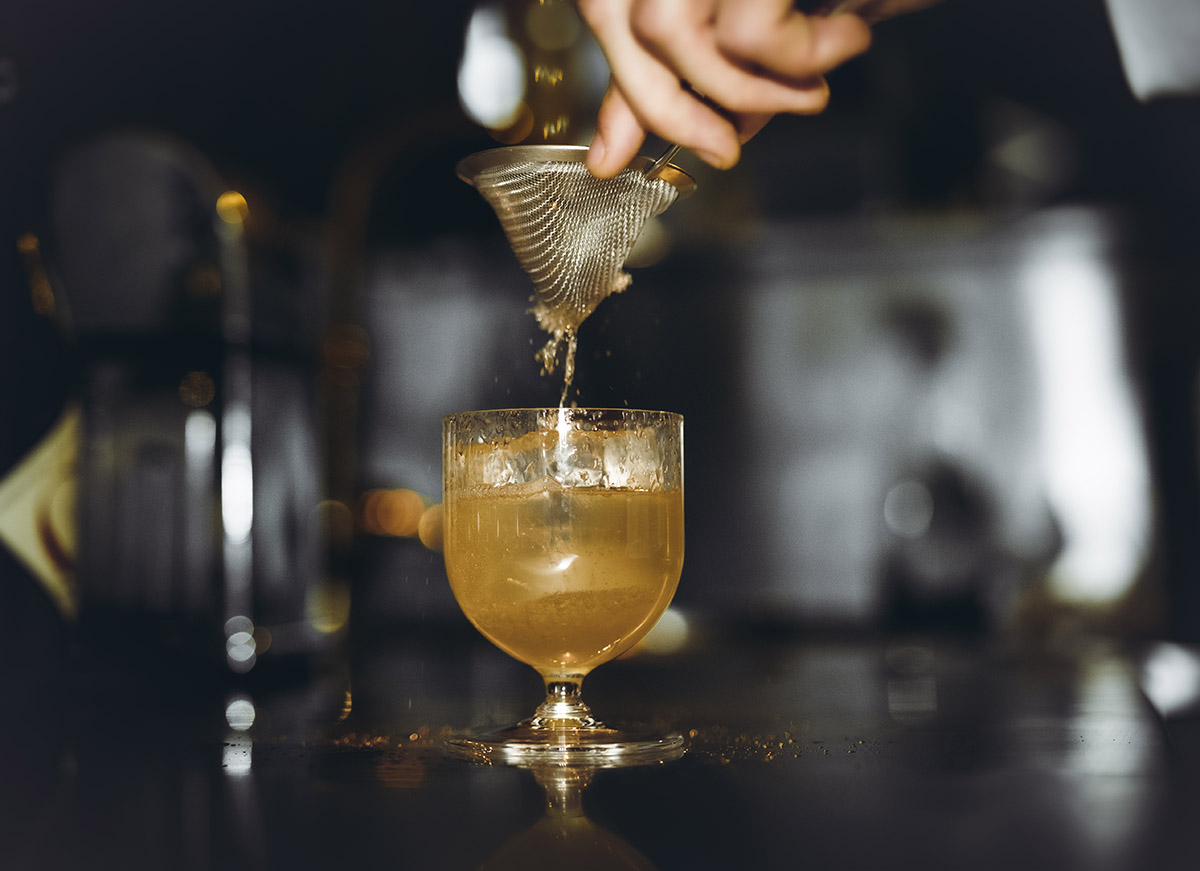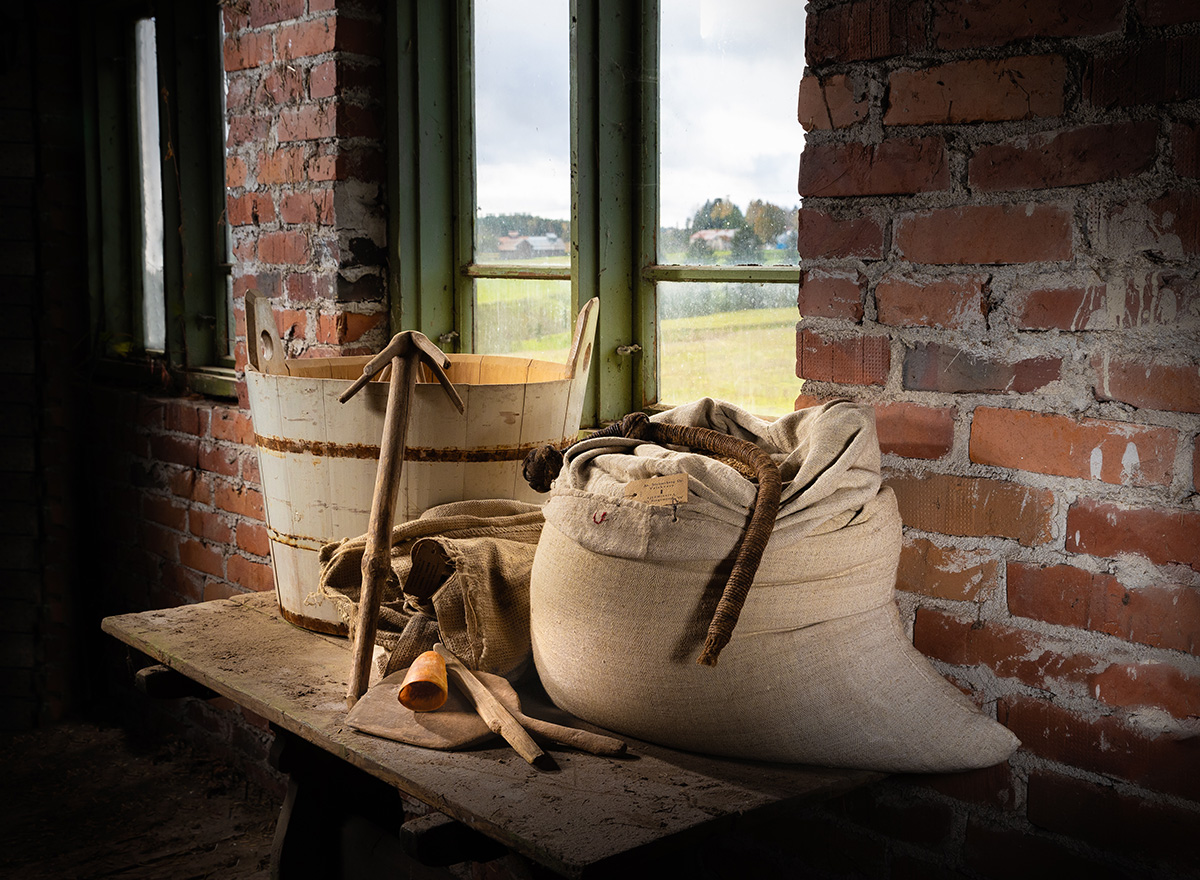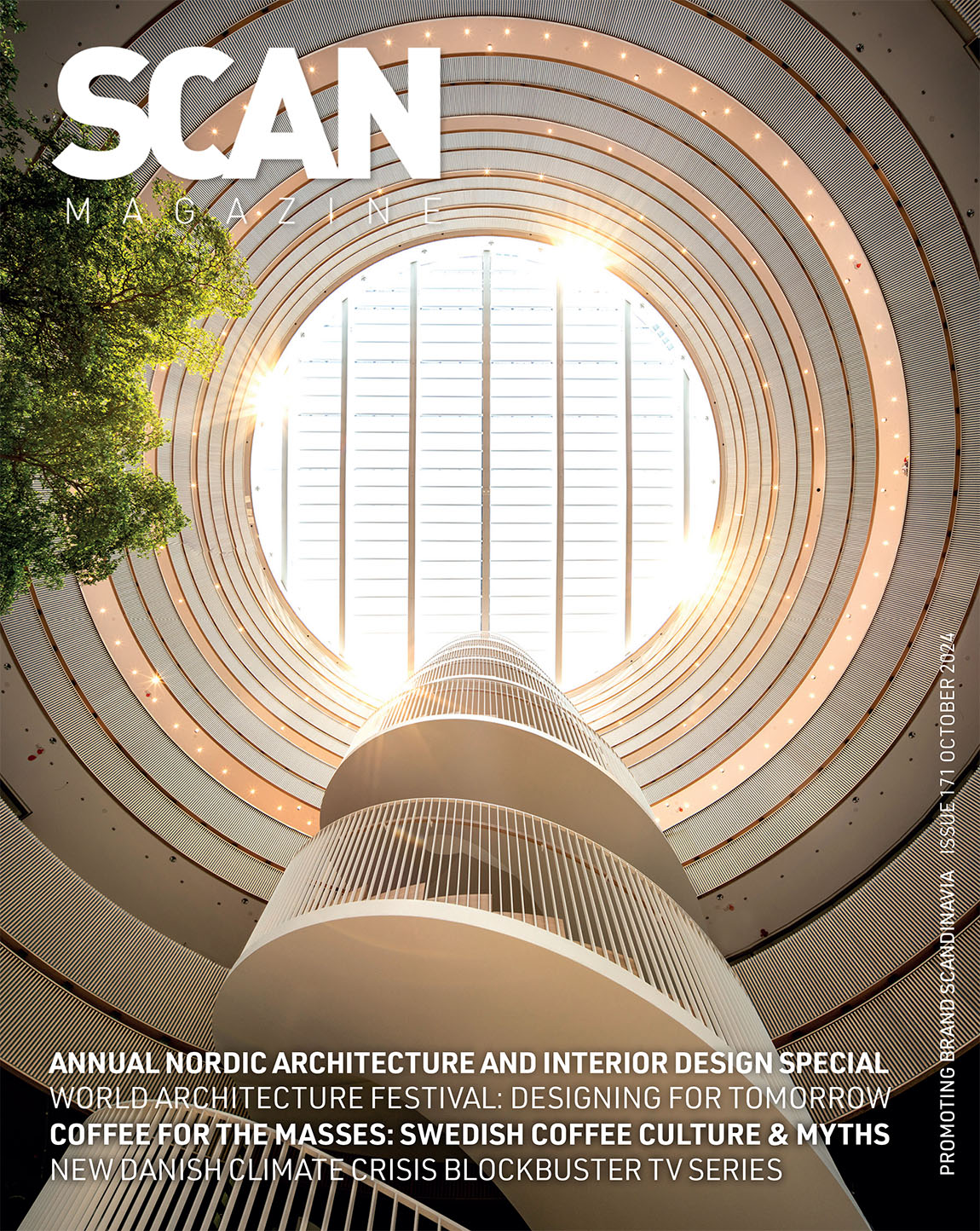Fangst: Nordic traditions and delicious seafood
By Molly McPharlin | Photos: Fangst
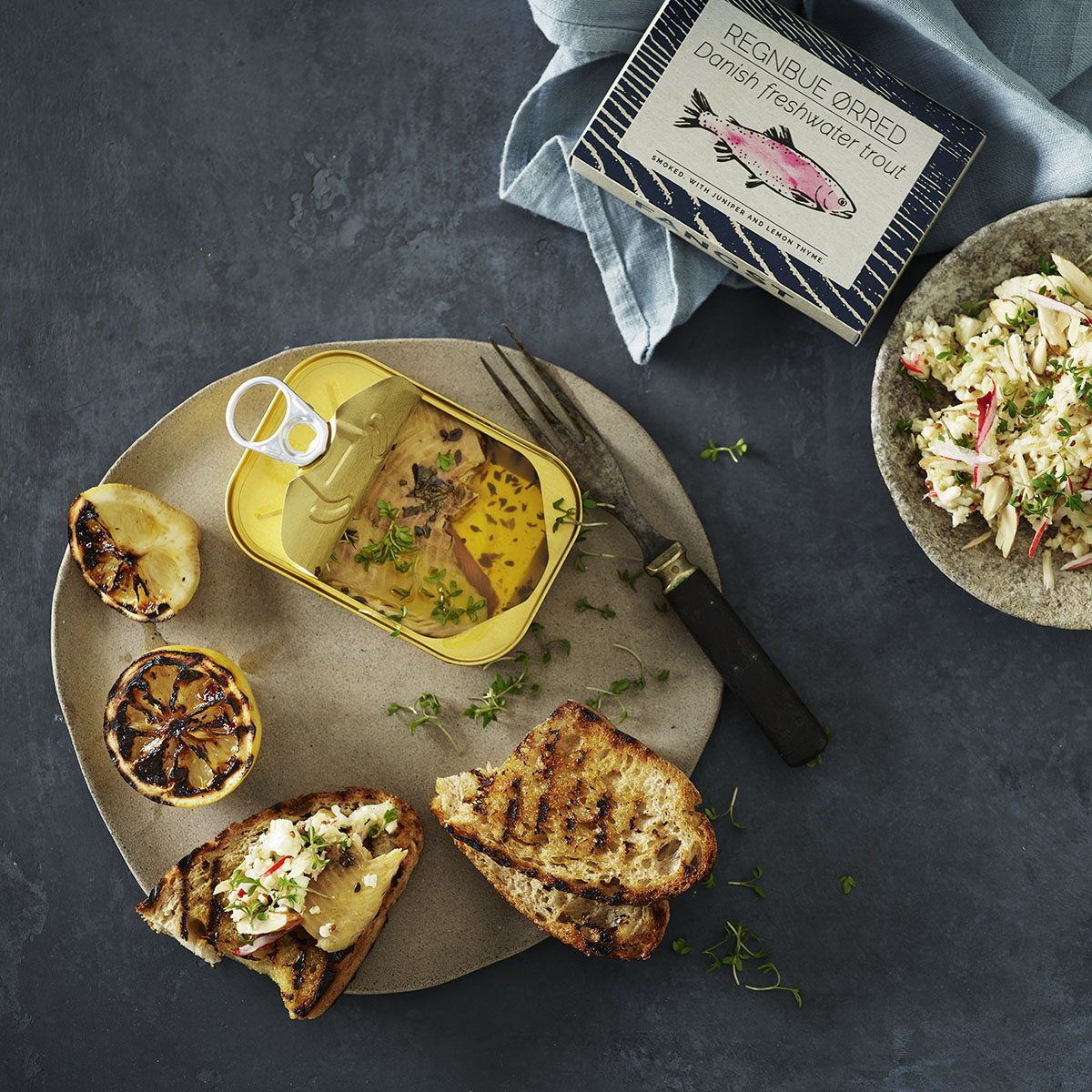
In the Nordic culinary world, fish and seafood traditions are strong. Fishing has been a primary industry in Scandinavia for centuries, and canning has enabled the industry to blossom internationally by enabling the preservation, sale and export of Nordic seafood to places as far away as Antarctica. Many families in the Nordics, especially those living in coastal regions, have personal connections to fishing and canning. In Stavanger, Norway, there is even a museum dedicated to the history of canning. Now, Fangst (meaning ‘catch’) is reviving the traditional art of canning seafood and fish.
Denmark-based Fangst is the brainchild of Martin Bregnballe and Rasmus Østerlund. Both had worked in the Nordic food scene and taken part in its recent renaissance, but wanted to shift their focus from ‘land-based’ food to fish and seafood. They noticed that local seafood, though popular abroad, was not as widely consumed in the Nordics.
“We felt that people would eat more seafood if it was readily available and easier to prepare and serve,” says Bregnballe. “We noticed a growing trend for eating canned seafood in bars in Portugal and France, and in informal restaurants in Copenhagen and other European cities. We decided to rethink canned seafood from the North.”
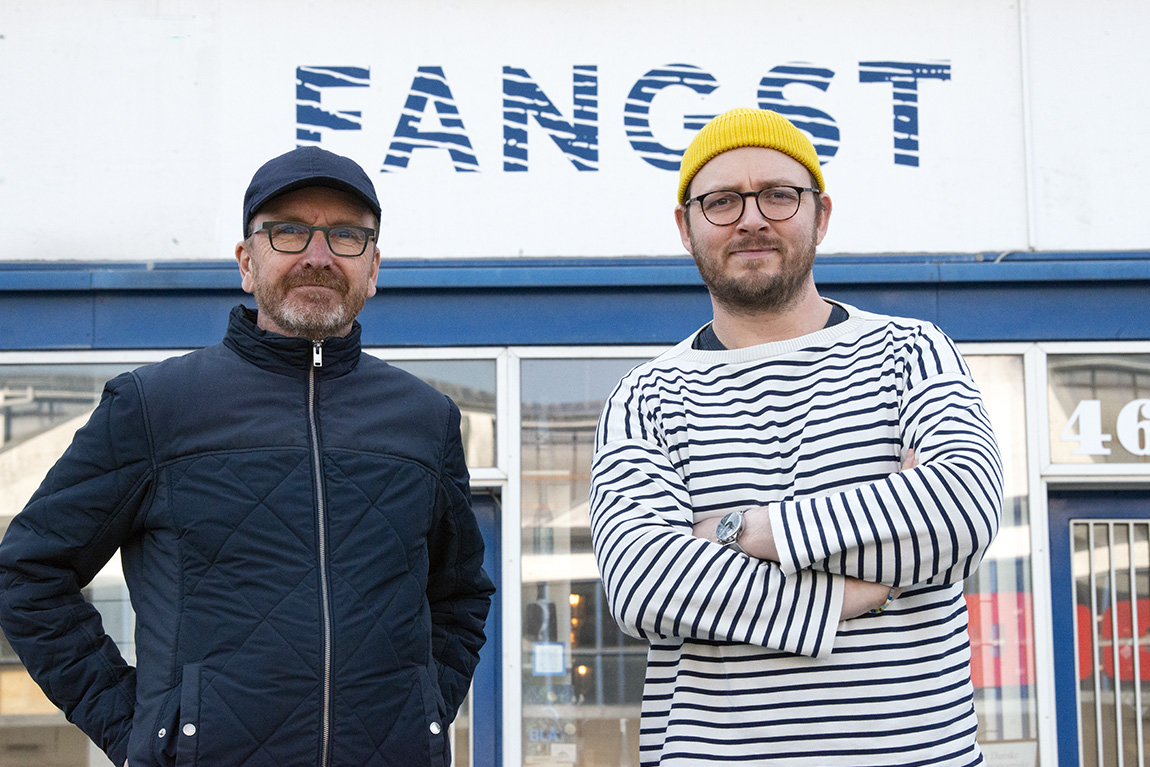
Team in front of shop.
Focus on Nordic ingredients
Fangst is not just Danish, it’s Nordic. The fish and shellfish come from the broader Nordic region: the Baltic Sea, Limfjorden in Denmark, the Norwegian Sea and the fjords of the Faroe Islands. The oil is also Nordic. “We took particular care to find exceptional oil,” says Bregnballe. “The easy solution would have been to import a good olive oil from Southern Europe. However, we try to use Nordic ingredients wherever possible, so we wanted to find the best oil from the North.” The result is organic, cold-pressed rapeseed oil from Sweden and Denmark. “It has a buttery taste and colour, with a herbal note that matches the seafood flavours perfectly.” Bregnballe feels Fangst has distinct Nordic flavour in their cans. The seafood is simple, without strong flavours or heavy spicing. The fish and shellfish speak for themselves, though sometimes enhanced by light beechwood smoking, flash grilling or a sprinkle of herbs.
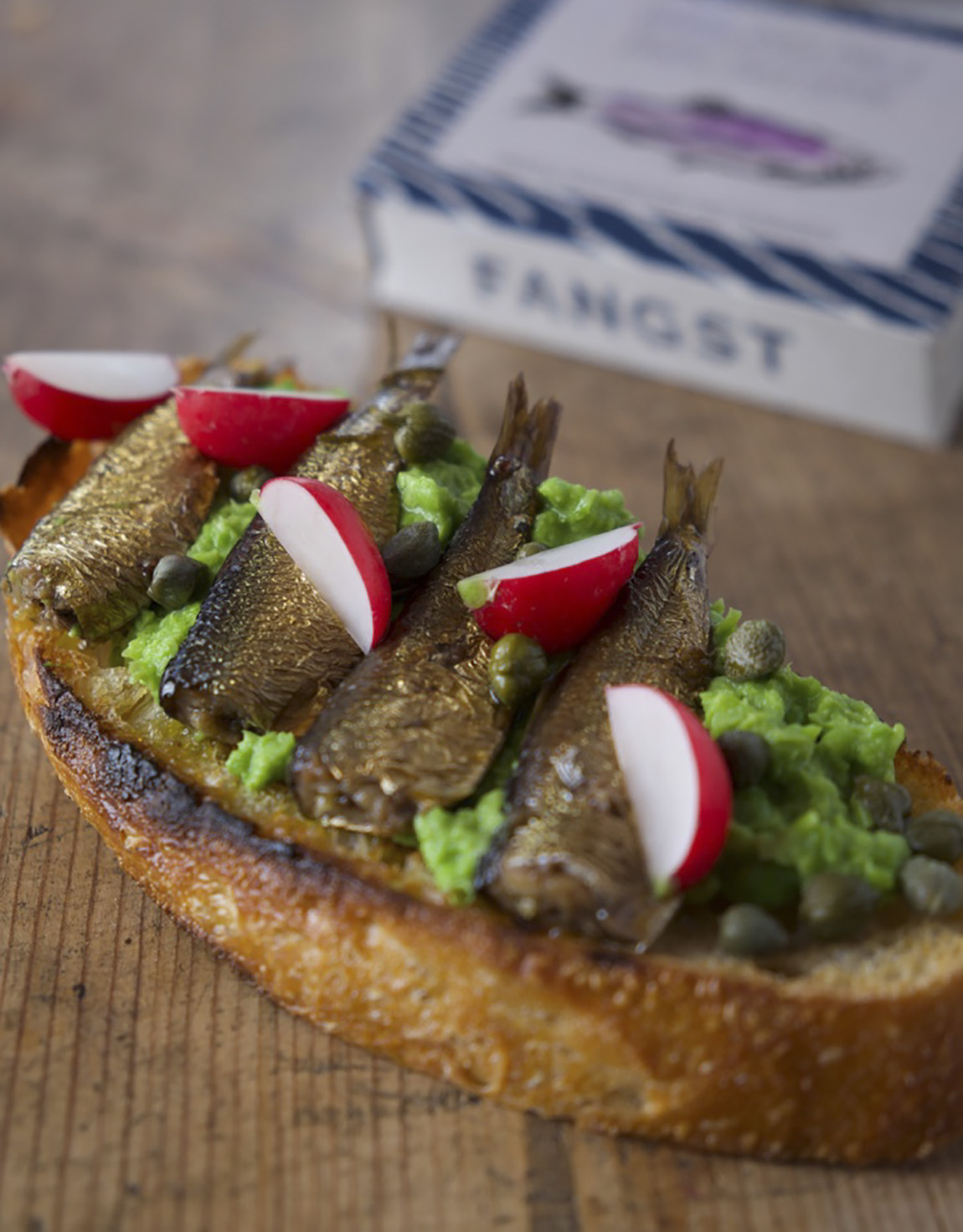
Smørrebrød w. brisling.
A simple, enjoyable way to eat
In the Nordics, canned seafood has a reputation as a staple quick-lunch food – perhaps on rye bread with cucumber. But now, it’s become a Nordic version of tapas. It’s an informal approach to serving a shared meal, without hours of preparation. “A few different Fangst cans with sourdough bread, good mayonnaise, lemon, maybe a couple of salads and pickles: this is all it takes to create a light Scandinavian meal to share,” says Bregnballe. “You can also make an easy selection of smørrebrød, which are open-face sandwiches.” Fangst has many creative and delicious suggestions on how to eat their canned fish and seafood, on their website.
Design that whets the appetite
Fangst’s flavours are a journey through Nordic waters. Many customers have tried salmon before, but few have experienced fish such as brisling, a local version of sardines. By highlighting regional ingredients and flavours, the company hopes to spread the love for Nordic delicacies internationally. That’s why Fangst believes that their product design plays such an important role. “We put a lot of effort into creating beautiful packaging in a distinct Nordic style,” says Bregnballe. “It’s inspired by Nordic nature, the rough waters, cliffs and coasts, dark forests – with a colourful flower or berry here and there. We know many people initially buy our cans for the packaging, to share at home as a gift.”
Respect for the environment
“Respecting nature is part of our mission,” Brengballe states. “Our fish and shellfish is either wild-caught by MSC-certified fisheries, or it’s from ASC-certified farms. We prioritise species that are practically CO2 neutral, such as mussels and small fish, but of course we have the iconic salmon too. Seafood in general, even including farmed fish, is recognised by most sources as a more sustainable food source than any meat.” Canning also has a very long shelf life at room temperature. It makes the risk of food waste extremely low. And there is no need to heat or cool the cans before serving. Fangst’s cans are 100 per cent recyclable when sorted and disposed of as metal. As well as being traditional, canning is both practical and environmentally friendly.
The future of Fangst
Fangst is now attracting attention from outside the Danish market, and though Fangst continues to be a small, independent company, their products sell in selected restaurants, bars and specialty stores around Europe, the US and Asia. In Denmark, visitors can buy Fangst products at Nordic Gastronomy in Copenhagen Airport, in their shop in the Meatpacking District in Copenhagen and in several other specialty stores. For the future, Fangst hopes to earn a place next to the best fish and seafood cans from Portugal and France; in shops, on menus and on tables around the world.
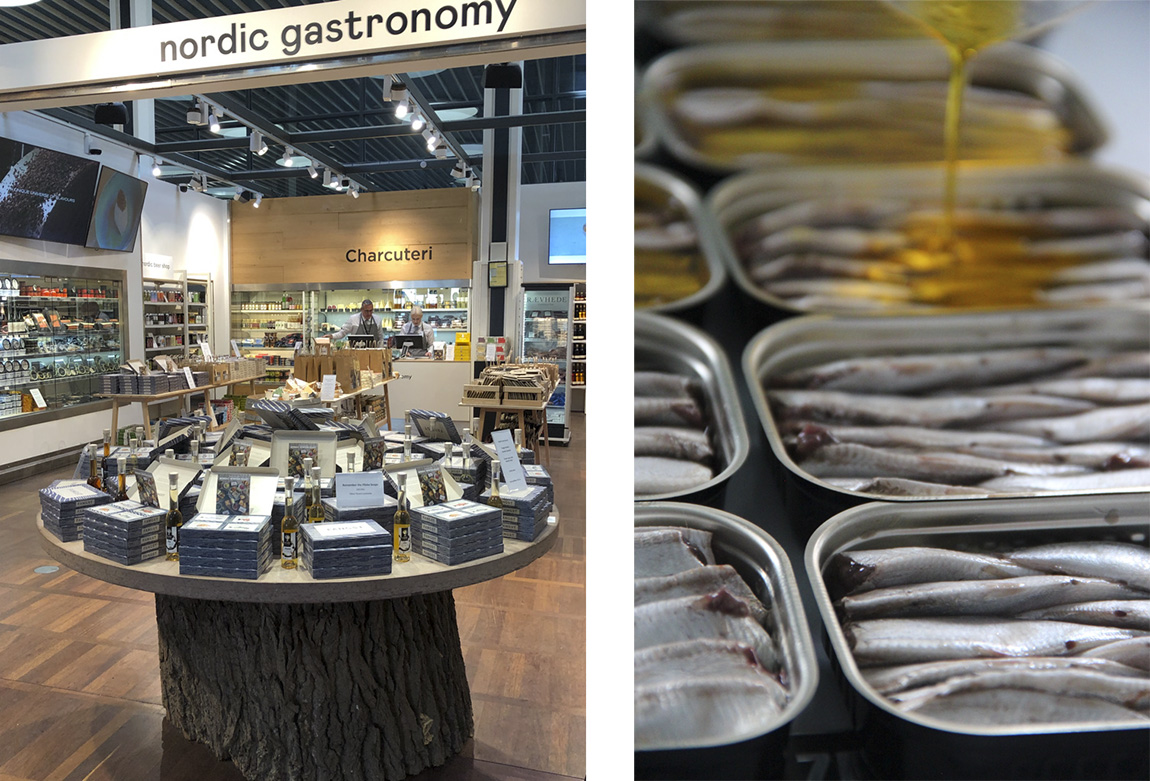
Left: FANGST at the airport. Right: Adding cold pressed rapeseed oil.
Web: www.fangst.com Instagram: @fangst.nordic Facebook: fangst.nordic LinkedIn: Fangst
Subscribe to Our Newsletter
Receive our monthly newsletter by email

